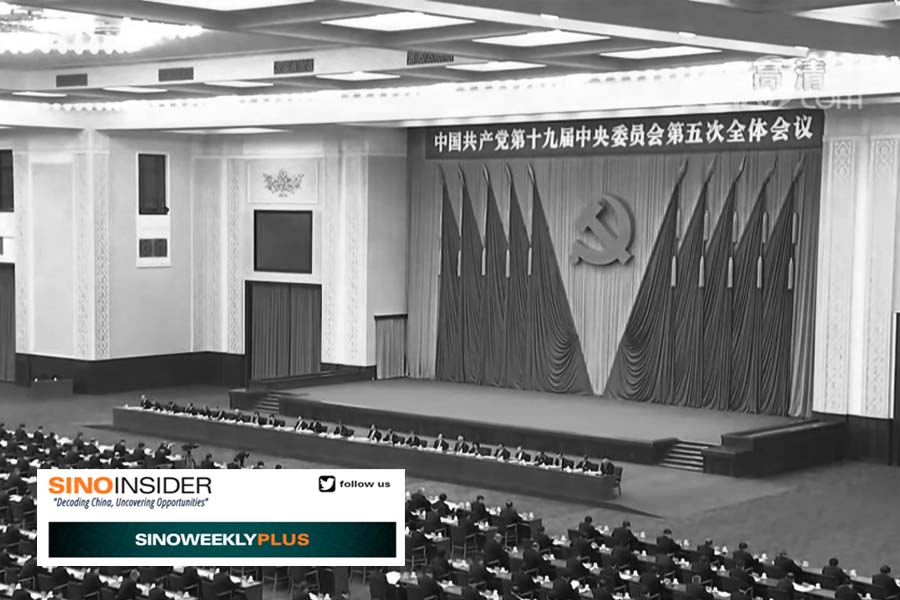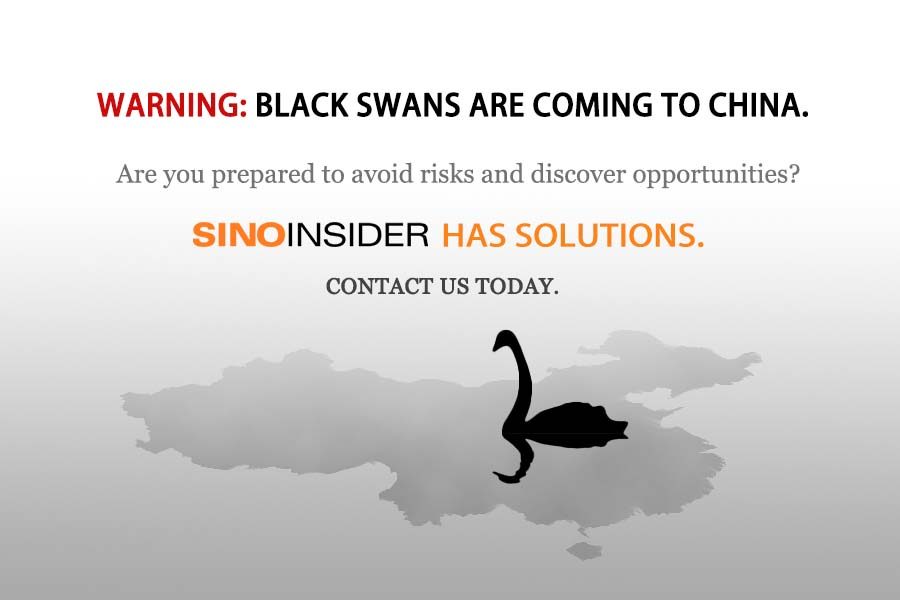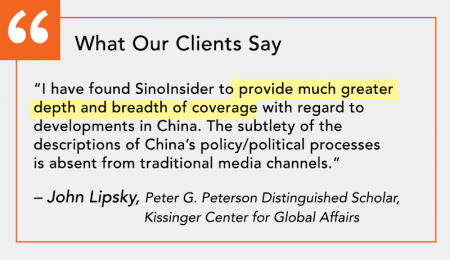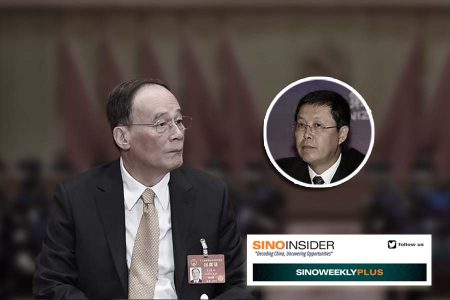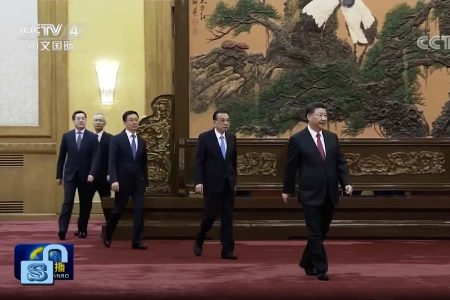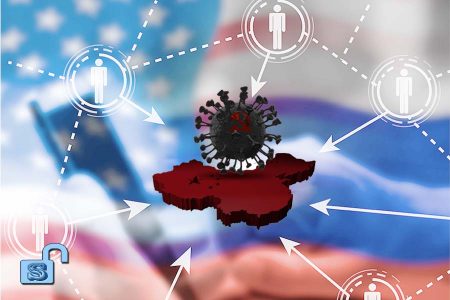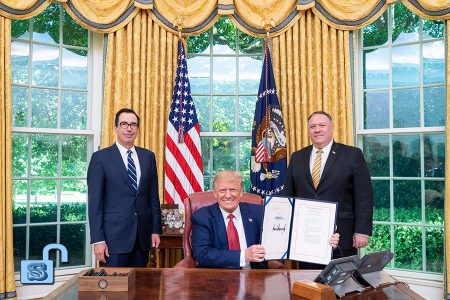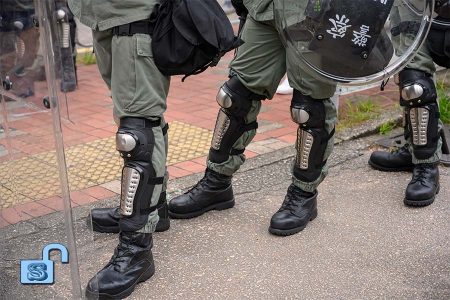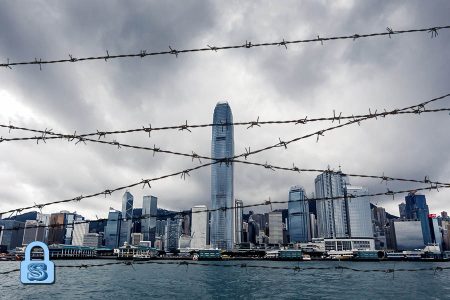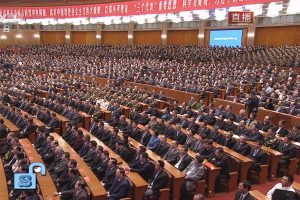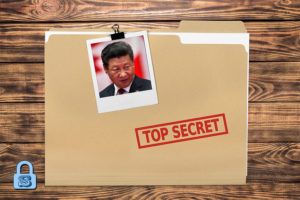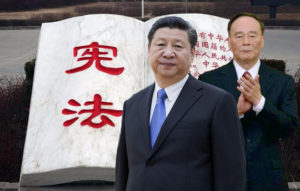◎ The following analysis was first published in the Oct. 29 edition of our subscriber-only SinoWeekly Plus newsletter. Subscribe to SinoInsider to view past analyses in our newsletter archive.
At 5:33 p.m. Beijing time on Oct. 29, PRC state media Xinhua released the official communique for the Fifth Plenum of the CCP’s 19th Central Committee. Several hours later, Xinhua’s Fifth Plenum web page only showed the communique plus four articles (reporting and commentary) on the recently concluded plenary session, with the remaining articles being “old news” on past plenums. The headlines of the four articles are:
- “The Central Committee of the Chinese Communist Party Will Hold a Press Conference on the Morning of the 30th to Introduce Discussions of the Fifth Plenary Session of the 19th Central Committee of the CCP” (published 3:01 p.m., Oct. 29)
- “A Quick Overview of the Fifth Plenum Communique” (published 6:00 p.m., Oct. 29)
- “Xinhua Net Commentary: Seize the Opportunity to Advance and Embark on a New Journey” (published 7:18 p.m., Oct. 29)
- “These Views in the Fifth Plenum Communique Are Worth Noting” (published 8:59 p.m., Oct. 29)
Mainland media outlets (official and semi-official) republished the Xinhua communique and plenum-related official commentary. At the time of writing, we did not spot other mainland media carrying their own articles on the Fifth Plenum.
The communique noted that the 19th Central Committee discussed a proposal for the CCP’s “14th Five-Year Plan for National Economic and Social Development and a Vision for 2035.” Key points of the communique include:
- A review of the “great achievements” of the 13th Five-Year Plan, which are attributed to the leadership of “Party Central with comrade Xi Jinping at the core” and the “superiority” of PRC’s socialist system.
- The CCP frames the crises faced by the regime and its current predicament as an “opportunity of the century.”
- The 14th Five-Year Plan will focus on “dual circulation,” with “domestic circulation” as the “mainstay,” supported with external resources through “international circulation.” The communique does not detail how the CCP plans to implement “dual circulation.”
- The CCP expects China’s GDP to exceed 100 trillion yuan in 2020, and says that the regime will need “higher quality growth” over the next five years (2021-2025). However, the communique does not provide a GDP growth target for the period or for its “vision for 2035.”
- The CCP plans to achieve technological self-reliance over the next five years to “support national development.”
No personnel changes were made at the Fifth Plenum, despite prior widespread speculation.
Our take
1. In our last newsletter, we said that Xi Jinping will not reshuffle personnel at the Fifth Plenum because he has been able to bring factional struggle under a relative degree of control through recent moves to bolster his “quan wei” and consolidate power. Our analysis is now verified with the confirmation that there was no personnel movement at the Fifth Plenum.
The lack of personnel changes at the Fifth Plenum debunks the “Xi-Wang split” narrative, which is currently popular among both English- and Chinese-speaking China watchers. We have reason to suspect the “anti-Xi coalition” of fanning the “Xi-Wang split” narrative ahead of the Fifth Plenum to heap political pressure on the Xi camp. The “anti-Xi coalition” did something similar ahead of the Fourth Plenum by spreading rumors that Xi Jinping was going to name successors and expand the Politburo Standing Committee from seven to nine members at that plenary session.
Again, we stress that not all who push the “Xi-Wang split” narrative are necessarily part of the “anti-Xi coalition” in the CCP elite. Some of the arguments for a “Xi-Wang split” that we have seen appear to be derived from misunderstandings of how CCP factional politics work and misreadings of official CCP propaganda.
Based on our research, the “Xi-Wang split” narrative originated from influential persons involved in the factional struggle between Xi Jinping and the Jiang Zemin faction some years back. However, the narrative only became “mainstream” in the months leading up to the Fifth Plenum, which suggests that there have been recent efforts to spread it and have media outlets pick up the disinformation as they hunt for topics to write regarding the CCP plenary session in an increasingly bare informational environment.
2. No personnel changes, however, does not mean that Xi Jinping has smoothed out issues related to the factional struggle. The relative “calm” of mainland media during the Fifth Plenum period, the shortage of reporting and commentary on the Fifth Plenum from official sources immediately after the important political conclave, as well as the tight control of the official narrative on the plenary session, hint at strong dissent inside the Party.
The Fifth Plenum and the CCP’s 14th Five-Year Plan are very important issues for the PRC, especially when it is faced with mounting domestic and foreign problems. Hence, it is not unusual if Party and state media talk up the importance of the Five-Year Plan for China and report on the Fifth Plenum in glowing terms. However, CCP official media and other mainland media were extremely “quiet” about the aforementioned issues over the duration of the Fifth Plenum (Oct. 26 to Oct. 29). The tone of official reporting and commentary about the Fifth Plenum following its conclusion is also relatively business-like, with little hype or personalized praise of Xi Jinping. In fact, it was The New York Times that released an article on the Fifth Plenum with a headline one would expect to appear in Party media, with admiring praise for Xi Jinping (“As the West Stumbles, ‘Helmsman’ Xi Pushes an Ambitious Plan for China”). A closer read of the Fifth Plenum communique shows that the Times is guilty of overplaying the significance of “Helmsman Xi”—“helmsman” (全黨的核心領航掌舵, or “the Party’s core navigator and helmsman”) is only used once in the entire 6,000-plus character document, comes several paragraphs into the communique, and then only appears after a string of customary plaudits for the CCP head. The absence of personalized praise for Xi in official propaganda about the Fifth Plenum shows that he does not want to draw attention to himself, and also hints at intra-Party disquiet.
Based on our long research into the CCP, the projection of external “calmness” often indicates troubling internal conflict; the more “calm” the CCP presents on the outside, the stormier the intra-Party struggle. The general shortage of Fifth Plenum reporting and commentary, as well as the uniformity of the information carried in mainland media, suggest Xi is trying his best to suppress intra-Party dissent and prevent challenges to his authority from being made public. For instance, the “anti-Xi coalition” could undermine Xi by seeing that media reports about the plenum deviate from Xinhua’s (contradictory information, unusual formatting, etc.); Xi’s tight control over what mainland media can report about the Fifth Plenum, however, has denied his political enemies the opportunity to do so in China (Xi’s rivals could still find opportunities to leak unflattering information about the plenum in foreign media and academia).
3. Some China commentators are claiming that Xi Jinping plans to push for a third term (2027) or even a fourth term (2032) because the phrase, “a vision for 2035” is tagged at the end of the proposal for the 14th Five-Year Plan. Based on our analysis of Xi’s actions to date, we believe that he is seeking at least a third term in office to properly root out factional resistance to his leadership, fully consolidate power, and actualize his vision for the PRC. However, “vision for 2035” has virtually nothing to do with Xi’s personal ambitions.
Historically, the CCP rolls out a “pie in the sky” (畫大餅) goal for the regime and “spins tragedy into cause for celebration” (喪事當喜事辦) when it is undergoing a period of crisis. The CCP then repeats the goal in propaganda until close to the year where it is supposed to attain it, then shifts the goalposts with another “pie in the sky.”
Much of “pie in the sky” rhetoric in the recently released Fifth Plenum communique are rehashes (see the next point) of what was previously trotted out in prior plenums that were held during troubling times. For instance, Deng Xiaoping introduced the “Four Modernizations” (四個現代化) at the 11th Party Congress in 1977 and targeted their actualization for the year 2000. At the time, Mao Zedong’s disastrous Cultural Revolution had just concluded following his death, and Deng and the CCP needed to give the Chinese people a “pie in the sky” to help them “forget” the Party’s failings and abuses, and instead refocus their energies towards accomplishing the set goal. The communique of the Fifth Plenum of the 11th Central Committee in 1980 called on Party members and the Chinese people to “look ahead in unity” and “devote oneself to the grand cause of realizing the Four Modernizations with one heart, one mind, and with confidence.”
Fast forward to September 1995, when the 14th Central Committee discussed its proposal for the “9th Five-Year Plan and outline for a vision for 2010” during its Fifth Plenum. Then, the CCP under Jiang Zemin was faced with crippling sanctions by the international community over its bloody massacre of student protesters in Tiananmen Square on June 4, 1989. Also, the year 2000 was just around the corner but the CCP still had a lot of ground to make up to achieve its “Four Modernizations” goal. The communique of the Fifth Plenum of the 14th Central Committee explained economic difficulties resulting from international sanctions and the frosty attitude towards the regime as “profound changes in the international landscape and fundamental changes in the country’s economic system.” To paper over the CCP’s failure to achieve its modernization goals by 2000, the communique wrote, “promoting modernization in a country with a population of over a billion people is a very promising but extremely difficult undertaking.” The communique then shifted the goalposts by setting the target of reaching a “moderately prosperous society” in 2010, and called for Party members and the Chinese people to “unite” under the leadership of “Party Central with comrade Jiang Zemin at the core,” and struggle towards attaining the long-term, “pie in the sky” goal.
4. The communique of the Fifth Plenum of the 19th Central Committee is a glorified exercise in “pie in the sky” goal-setting and the “spinning of tragedy into cause for celebration”:
a) All of the Xi leadership’s few successes and many failures are simply packaged as “major new achievements” under the guidance of the CCP’s Marxist-Leninist ideology. Meanwhile, the CCP’s pressing domestic and eternal troubles are described as “complex international situations” and “an arduous task of domestic reform, development, and stability.” To overcome difficulties, Party members and the Chinese people need to rally around Party central with Xi as “the core navigator and helmsman” (plus a whole paragraph of praises) to “overcome the various hardships and dangers that lie on the path forward.” The rhetoric here is strikingly similar to that found in the Fifth Plenum communiques issued in Deng Xiaoping and Jiang Zemin’s time.
b) The 13th Five-Year Plan under Xi is hailed as a “decisive achievement in comprehensively building a moderately prosperous society.” Meanwhile, the “superiority” of CCP leadership and the socialist system are “further demonstrated” in the “accomplishments” of that five-year plan’s goals, with “victory in sight.” Given that the CCP has not fulfilled several aspects of the 13th Five-Year Plan, and has even stalled or backtracked on economic liberalization promises, it is largely “spinning tragedy into cause for celebration” in the Fifth Plenum communique.
c) The CCP regime’s various crises are packaged as an “opportunity of the century” and a “period of important strategic opportunities.” Rapid economic deterioration is packaged as “a shift to high-quality development,” one in which the CCP has “significant institutional advantages.”
The communique does acknowledge “the prominent problem of unbalanced and inadequate development.” However, the Party, like the proverbial “savior,” will “coordinate an overall strategy for the great rejuvenation of the Chinese nation and to overcome changes unseen in a century.”
d) The “vision for 2035” calls for the “realization of socialist modernization” by the target year, including greatly increasing “national strength,” being at the forefront of “innovative countries,” establishing a “modern economic system,” reaching the standard of a “moderately developed country,” etc. The stated goals are not much different in spirit from Deng’s “Four Modernizations” and Jiang’s “moderately prosperous society,” and amount to a blank check for the Chinese people in considering that no CCP leader will be in power long enough to actualize his “pie in the sky” goal and will have retired before he can be held accountable (if such a thing is possible in the techno-totalitarian CCP regime). And even if Xi Jinping is still in power in 2035 (he will be 82 then), he would have long shifted the “vision for 2035” goalposts before the target year arrives.
e) Observers who insist that the CCP is ideological in name only should pay attention to the focus on ideological control in the communique. The communique stresses the “guiding position of Marxism in the ideological realm” and notes that “socialist core values are deeply rooted in the hearts of the people.” While the CCP accelerates the modernization of the People’s Liberation Army, it must “uphold the absolute leadership of the Party over the people’s army.” Finally, Party members and the Chinese people must “resolutely persevere with the Party’s comprehensive leadership” and “closely unite around Party Central with comrade Xi Jinping at the core” to “win a new victory in the comprehensive construction of a modern socialist country.”
5. At a glance, the communique of the Fifth Plenum of the 19th Central Committee reveals the CCP’s ambitions and defiance in the face of adversity. Parse Party parlance, however, and the communique is a new bottle filled with old wine of crisis year vintage. Xi Jinping’s tight control over what sort of information mainland media are allowed to carry about the Fifth Plenum also hints at troubling intra-Party strife and dissent.
Businesses, investors, and governments need to unpack CCP “pie in the sky” propaganda and pay attention to factional struggle in the Party elite to sidestep political risks in China and uncover opportunities elsewhere.
